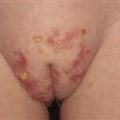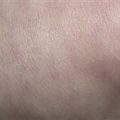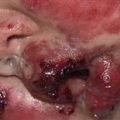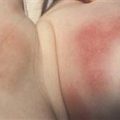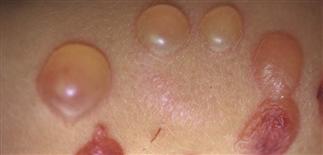
Tense bullae in child treated with vancomycin.
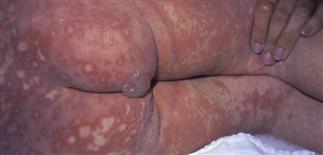
Bullous macules with islands of uninvolved skin in Stevens−Johnson syndrome.
CLINICAL FEATURES
In bullous drug reactions, tense bullae develop, usually on the extremities but often may be widespread. They usually begin within 2 weeks of starting the drug. Vancomycin is the most common cause of these eruptions and is associated with linear IgA deposition at the dermal-epidermal junctions (see DDx ref 13 Linear IgA dermatosis). Bullae may also be seen in fixed drug eruptions (see DDx ref 53 Fixed drug eruptions), erythema multiforme (see DDx ref 35 Erythema multiforme) and in Stevens−Johnson syndrome (SJS) and toxic epidermal necrolysis (TEN) (see DDx ref 20 Stevens−Johnson Syndrome (SJS) and Toxic Epidermal Necrolysis (TEN)).
TREATMENT
Treatment begins with removal of the offending drug. Otherwise, treatment depends on the severity of the eruption. See appropriate section for further discussion of the treatment of linear IgA dermatosis, drug eruption, erythema multiforme, and SJS and TEN.

